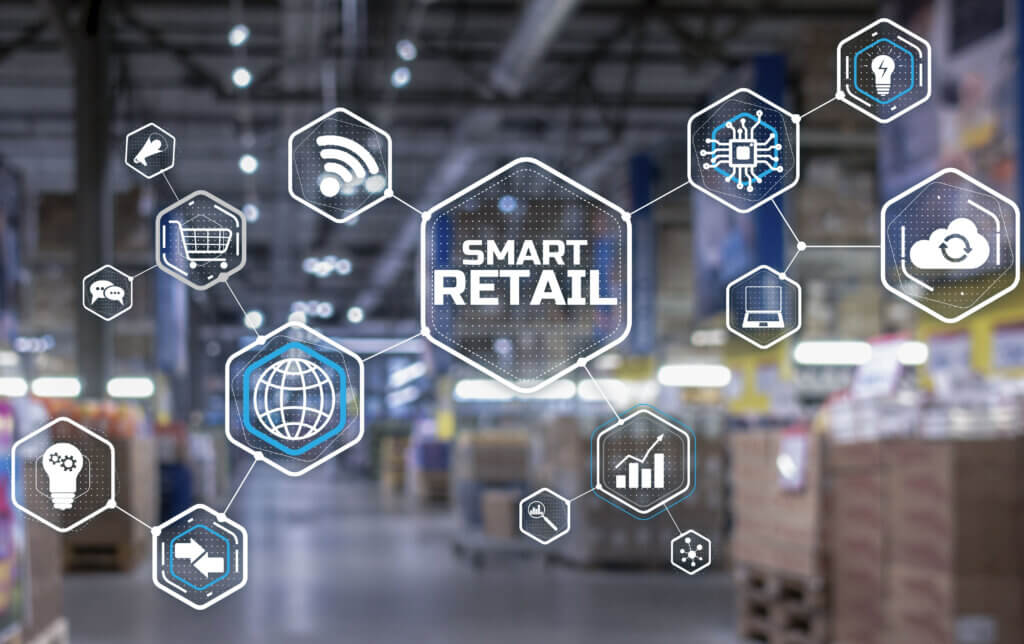Retail is evolving fast. Brick-and-mortar stores are under pressure to meet rising customer expectations while competing with e-commerce giants. Success today isn’t just about having the right products—it’s about delivering smarter, faster, and more personalised shopping experiences powered by technology.
From AI to virtual shopping, here are six tech trends that are reshaping the retail landscape and helping businesses stay ahead in 2025.
Skip to What You Need to Know:
Need the highlights? Here’s a quick look at six tech trends reshaping retail in 2025:
- Predictive Analytics: Know what customers want before they do.
- Customer Service Automation: Think chatbots, but better.
- Brand Storytelling with Tech: AR and VR bring storytelling to life.
- Virtual Fitting Rooms: Try on outfits without stepping into a store.
- Buy Now, Pay Later (BNPL): Flexible payment options integrated into every step of the shopping journey.
- Grab and Go Stores: No lines, no cashiers. Just seamless, tech-driven shopping.
1. Predictive Analytics
With the advent of machine learning, Artificial Intelligence (AI)-based algorithms can now predict future trends based on historical data. This has provided plenty of opportunities for retailers to elevate the customer experience and increase profitability, including:
Personalised product recommendations
Instead of a one-size-fits-all marketing approach, retailers can now make use of customer data to create highly targeted and personalised marketing messages. These can include personalised product recommendations and advertising tactics that will ultimately increase customer engagement and sales.
Dynamic pricing
With AI, retailers can figure out the ideal pricing strategy based on prevailing circumstances. For example, keeping prices high when demand is peaking, and lowering prices to encourage demand during off-peak periods. This dynamic pricing strategy is already widely adopted by industries like airlines and hotels.
Supply chain optimisation
Integrating AI into the supply chain means that retailers can accurately forecast demand and better manage inventories. Starbucks’ Digital Flywheel strategy is one such example of incorporating AI to manage inventories within stores and improving service efficiency.
2. Customer Service Automation
Another technology that has become increasingly popular in the past few years is conversational AI, otherwise known as chatbots. These chatbots have become so advanced that most of the time, you won’t be able to tell them apart from their human counterparts.
With chatbots, retailers can efficiently attend to all of their customers’ queries simultaneously. Since chatbots are able to replace human customer service representatives, companies can look forward to cutting down on manpower costs as well.
3. Brand Storytelling
Tremendous advancements in Augmented Reality (AR) and Virtual Reality (VR) have seen an increasing number of retailers adopting the technologies to create a more immersive shopping experience. Product features and functionality can be showcased to customers in a fun and engaging manner.
For example, Whole Foods, an American multinational supermarket chain has replicated the shopping experience using VR. Customers can walk around stores virtually and browse items available, very much like an actual, in-person shopping experience.
4. Virtual Fitting Rooms
AR and VR technologies are turning mirrors into screens and smartphones into fitting rooms. Virtual fitting rooms let customers “try on” clothes and accessories in real-time using augmented reality overlays. Shoppers can check style, size, and fit without stepping into a store.
As online shopping grows, virtual fitting rooms bridge the gap between physical and digital, reducing returns and boosting buyer confidence. Major fashion retailers are adopting this tech to deliver a seamless, personalised shopping experience.
5. Buy Now, Pay Later
The past year has seen omnichannel “buy now, pay later” (BNPL) platforms adopted by leading retailers like Zalora, Sephora and Zara. Such online payment gateway solutions offer consumers a more flexible and streamlined payment process through interest-free or low-interest instalments.
BNPL platforms may be able to attract new customers who were initially hesitant to purchase high-value products. It is also an excellent way to maintain profits without resorting to tactics like discounting.
6. Grab and Go
Due to the pandemic, contactless payment is now the preferred payment method for retailers and customers alike. Amazon took contactless payment a step further with its Just Walk Out system, which is powered by RFID tags, computer vision systems, machine learning and facial recognition.
How it works is that customers enter the store using a credit card, and the Just Walk Out technology detects and keeps track of the products retrieved by shoppers in a virtual cart. When customers are done shopping, they leave the store and their credit card will automatically be charged for the items in their virtual cart.
This method of payment eliminates waiting times and queues in physical stores, which benefits both the customer and retailer tremendously.
It’s Time to Reimagine Retail
The gap between online and in-store experiences is closing fast. Technology like predictive analytics, AI-driven customer service, and virtual fitting rooms isn’t just enhancing retail—it’s redefining it. The businesses adopting these tools today aren’t playing catch-up; they’re setting new standards.
The question isn’t if you’ll adopt these innovations. It’s how fast you can make them work for you.
Want to explore how these technologies could work for your business?
Let’s talk about practical ways to integrate them into your strategy—without the jargon or unnecessary complexity. Contact us today.

